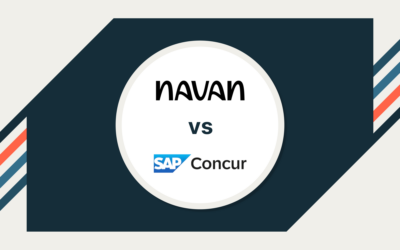Are purchase orders a time-consuming necessary evil or an easily completed step that adds accountability and regulatory compliance when required? The answer depends on the technology you use. It’s often necessary to raise a purchase order (PO), which can document a legally binding agreement confirming the terms of an order for goods or services. However, working with purchase orders has long been considered a cumbersome process that many employees prefer to avoid to save time. Even the most widely used bill payment software programs, like Bill.com and Tipalti, do not fully automate the process; they leave out capturing and enforcing required approval workflows.
An overly bureaucratic purchase order system can even lead some employees to avoid the process altogether and make purchases outside of a company’s expense policy procedures. That can be an expensive workaround. According to the Institute for Supply Management, “rogue spending” constitutes up to 80 percent of some company’s total spend.
Rogue spending can greatly reduce visibility into the financial status of a company and lead to budgeting issues. Visibility is increasingly important, as employees are now often free to make their own purchases instead of coordinating them through a central procurement department. Although this shift can improve productivity for employees by making it easier to buy what they want to do their jobs, it can also lead to more manual work and inefficient processes for AP departments.
In light of these trends, some finance teams are moving away from having employees raise purchase orders in favor of automated and customizable approval workflows that enable them to manage requests, vendor documents, and payments in one place.
However, there are many reasons why a purchase order is still the preferred process, including:
- Transparency. A smooth purchase order process gives the finance team control over approvals, knowledge of what exactly is being purchased, and a full audit trail. A purchase order provides clear documentation on the services or goods being purchased. POs may provide more detail than an invoice, but are typically more straightforward (and usually easier to read) than a contract. That helps keep both the vendor and purchaser accountable.
- Compliance requirements. Growing companies who plan to raise funds or go public must meet certain compliance requirements, specifically those like Sarbanes-Oxley. This includes control objectives and a documented audit trail including all purchase orders, invoices, and related documents.
- Vendor requirements. Vendors often require a purchase order number before they generate an invoice.
Fortunately, it’s not a binary decision between a clean, easy-to-use pre-approval system or a traditional purchase order system. Today’s automated and integrated PO systems offer the best of both worlds.
A pain-free purchase order process.
Let’s take a look at some common purchase pain points and how technology resolves them.
Too many documents: Many scenarios can make PO document management difficult: Prices can change, vendors can submit multiple invoices, a purchaser may only receive a partial shipment. To consolidate information and provide context, all contracts, quotes, and invoices should be attached to the original request. Robust reporting features and the ability to track POs by department, employee, team, vendor, or status in real time can help finance teams stay on top of committed purchases, regardless of whether an invoice has been received.
Time-consuming reconciliations: PO reconciliation helps ensure companies get what they pay for, but the process of matching a PO with an invoice can take valuable hours away from an accounting team. OCR technology can automate attaching an invoice to a transaction record and then create a bill that can be matched against the PO.
Confusing and ever-changing approval chains. A consistent, intuitive routine for all spend requests makes life easier for both employees and management. Because different types of purchases and different dollar amounts can require different approvers, a smart PO system is easily customizable, so an employee doesn’t have to remember who should approve which purchases.
Lack of visibility into financial status. In our fast-paced world, it’s becoming increasingly important to be able to view spending as it happens, not several weeks afterward. Finance teams look to their GL to provide accurate data that can be used to guide decisions. When a purchase order system can be synced with your GL in real time, you have more up-to-date information.
A modern spend management system accommodates purchase orders when they are deemed necessary or helpful. A good PO system attaches all relevant documentation, matches invoices to a PO, and syncs all transactions to the GL as payments are made.
It also allows for the customization and white labeling of purchase orders so that what gets sent to the vendor is consistent with your company. To find out how we can help you implement a new and better approach to purchase orders, contact Airbase to learn more.
 Jira Integration – Streamline Your Workflows
Jira Integration – Streamline Your Workflows  Ironclad Integration – Simplify Legal Operations
Ironclad Integration – Simplify Legal Operations  Asana
Asana 




